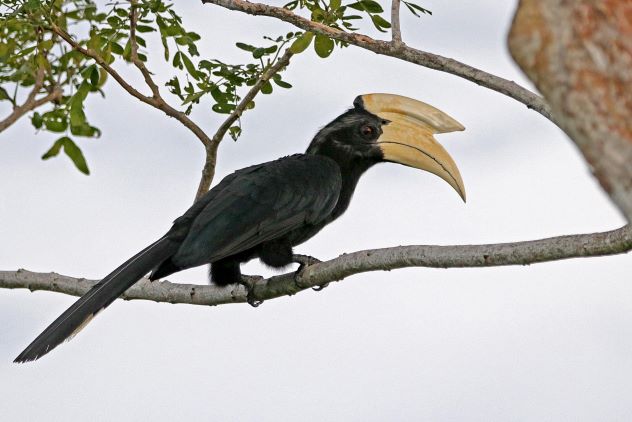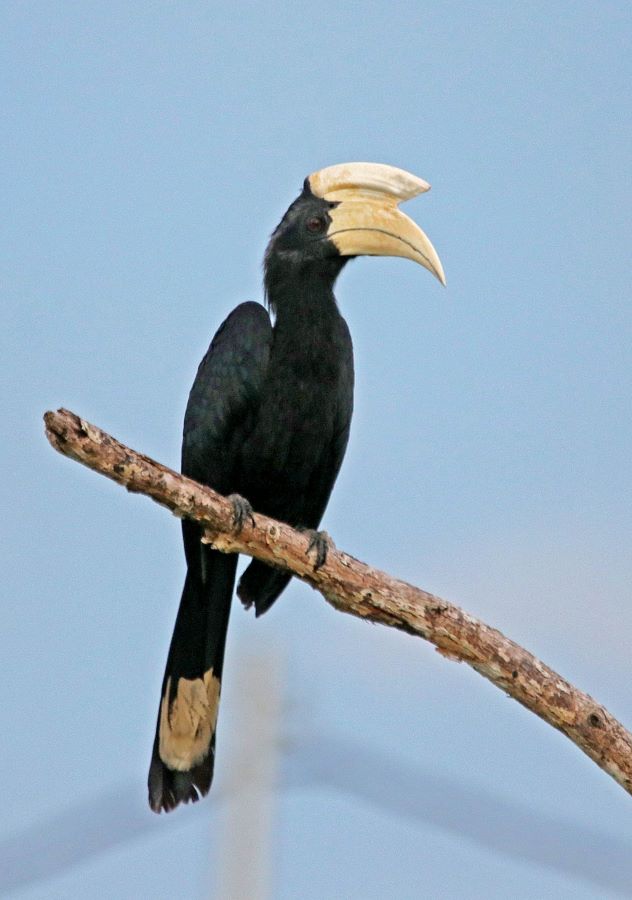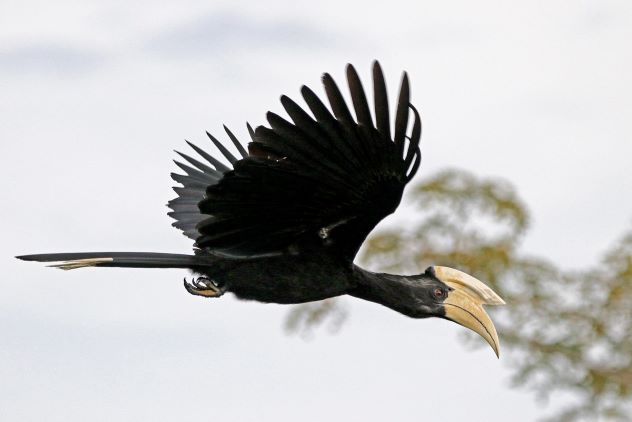I have been doing bird photography for a few years and the black hornbill is a bird that I have encountered only a few times in Kuala Baram Wetlands area near the roundabout going to Brunei.
The black hornbill (Anthracoceros malayanus) is a sooty black bird of the hornbill family Bucerotidae. It can be found in Brunei Darussalam, Malaysia, Indonesiua, Thailand and Singapore.
The hornbill inhabits primary lowland forests usually below 200 m elevation, rarely up to 600 m; frequently near water courses and often seen in alluvial flood plains and swamp forest; extends into mature secondary forest and forest edges nearby. It has a selectiveness towards the environment and resources when it comes to reproduction and will only start breeding and nesting when there is a large supply of fruits available, and in trees of larger size. It is the major seed disperser for Durio graveolens, a species of durian. The connection is strong enough to reflect in some of the common names for the fruit: The Kenyah and Dayak call it durian anggang and in Malay it is called durian burong/durian burung.
The black hornbill differs from the Oriental Pied Hornbill by its entirely black underparts and lack of white trailing edge in wings visible during flight. Male has yellowish bill with large casque andand an entirely black head; female has dark grey or black bill with small casque and pinkish or reddish skin around brown eyes. Juveniles have smaller pale greenish bills without casques. Some males have a bright white eyebrow. The hornbill gives a somewhat crow-like harsh braying calls.
It feeds mainly on larger lipid-rich fruits; but it also takes small animal food items including insects, skinks and bird eggs; it has been observed catching bats emerging from their cave at dusk and then feeding them to juveniles. When in the forest, it feeds inside the canopy, often visiting fruiting trees at dawn. It will use its powerful bill to split husks and tear into bark. It appears to be sedentary and territorial; usually a pair will be seen together.
Although it may be more tolerant of secondary habitats than some other hornbill species, high hunting pressure is likely exacerbating the population decline caused by habitat loss. The species is suspected to be undergoing a large population reduction. Therefore, it is listed as Vulnerable.
So far I have only seen the male black hornbill and have yet to encounter the female one. I really hope one day that I can encounter a female black hornbill or better still, a male and a female together.
 CY@CY Says Welcome to my dreamscape. Where a Lim is also a Ling.
CY@CY Says Welcome to my dreamscape. Where a Lim is also a Ling.


